Can someone hack into my phone through WiFi? Is it Possible?
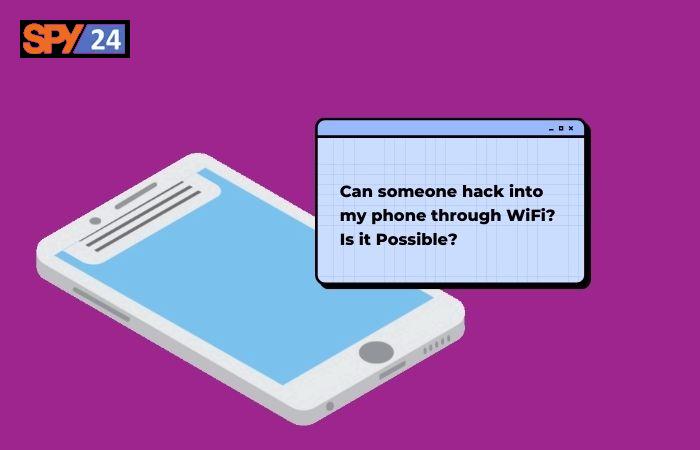
Hacking phone through WiFi is one of the many methods used by hackers. They can infiltrate not just your Wi-Fi, but also any other connection to the Internet that you may use. There is a good chance that the factory, where your phone was made also hacked it before it was sent to you. Do not believe that you are suffering from paranoia?
Hacking into people’s phones is just as real as you and I are. When you stop to think about it, it makes perfect sense. Every person who has and makes use of a mobile phone adds to the mountain of private, sensitive, and secret information that is stored on these devices.
In addition to this, each and every smartphone has a microphone and camera that, in the hands of an individual who is competent enough, may function as covert surveillance equipment.
Read this article all the way to the conclusion if you want to get some basic knowledge about how hackers hack phones through WiFi, how you may tell if you’ve been hacked, and how to decrease the possibilities of being hacked.
Simple Guide to Finish Hacking iPhone through WiFi

One of the most notable services that comes standard on smartphones is WiFi connectivity. This feature gives users the ability to browse the Internet, share files or Internet access with any other device that is within a certain range, and much more.
Did you know that a user can hack a phone through WiFi? If you are not familiar with this topic, you may find that statement unusual sounding; nevertheless, if you are interested in learning more about this topic and are keen to find out whether or not a device can be monitored using WiFi, keep reading this post.
The act of hacking constitutes a considerably distinct kind of technology. However, hacking tactics are expanding at an alarming rate, particularly considering the fact that hackers are always developing novel approaches to get access to our personal information and data. WiFi hacking is one of the latest common ways used to get into systems.
There are two distinct methods that may be used to hack WiFi: the first involves the hacker taking control of your network and redirecting it to their own device. The second, the hacker intercepts your WiFi signal in order to get access to the device that is linked (this method is regarded to be riskier).
Hack an Apple phone through WiFi using FoneWatcher
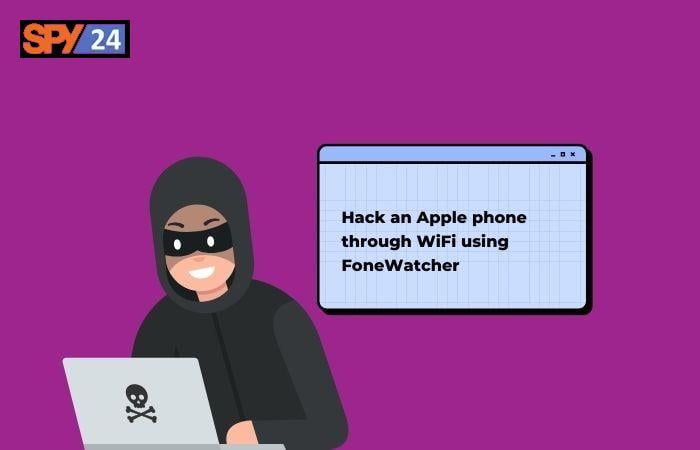
Hackers that work professionally can use the public accessibility of their WiFi as a kind of lure. Therefore, when people connect their phone or computer to this free WiFi, the router will record the IP address of the device that people are using.
There are a few fundamental tasks that need to be completed before you can start reaping the advantages of FoneWatcher, such as being able to hack into someone else’s phone by using their WiFi connection. Keep in mind that FoneWatcher is a premium product, so you may be required to buy various plans in order to ensure that it meets all of your requirements. Take into consideration the steps below:
Register a FoneWatcher Account
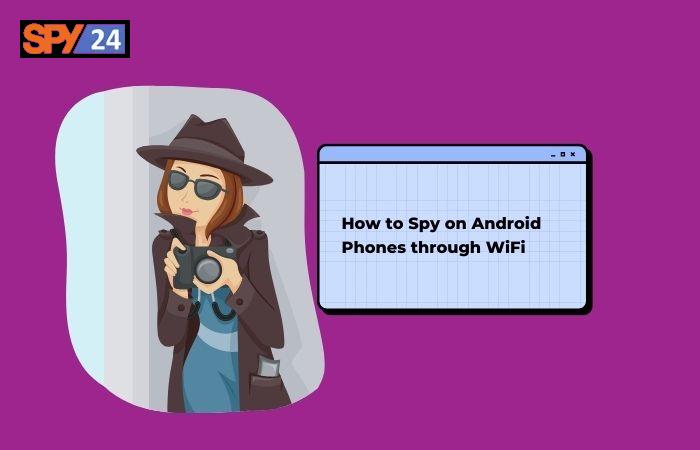
Before you can take advantage of everything that FoneWatcher has to offer, you will first need to sign up for an account with the platform, which is standard procedure for premium communities. You will be required to join or create an account shortly after browsing the homepage of the website.
You will be tasked with providing the required information at this point, after which you will proceed to the subsequent level.
Download the App on Target Computer
The next step, after completing the registration process, is to download the program onto the device that you want to use for the hacking. Since the FoneWatcher program is also available for PC, installing it on the computer that you want to monitor shouldn’t present any difficulties.
Connect the Target iPhone to the Computer via a USB Cable
At this point in the process, in the third stage, you will be required to connect the iPhone that you plan to hack to the computer. However, you will need to make use of a USB connection in order to do this. You should also keep in mind that you only have to connect the iPhone to the computer once in total.
The next time, you won’t need to connect the iPhone to the computer in order to monitor it as you may use WiFi instead.
Monitor Target iPhone on FoneWatcher Dashboard
This is the last phase in the process. The dashboard of your FoneWatcher profile now gives you the ability to simply monitor the iPhone belonging to the individual. You have unobstructed visibility into any and all activity taking place on the device, including the user’s whole browsing history.
How to Spy on Android Phones through WiFi
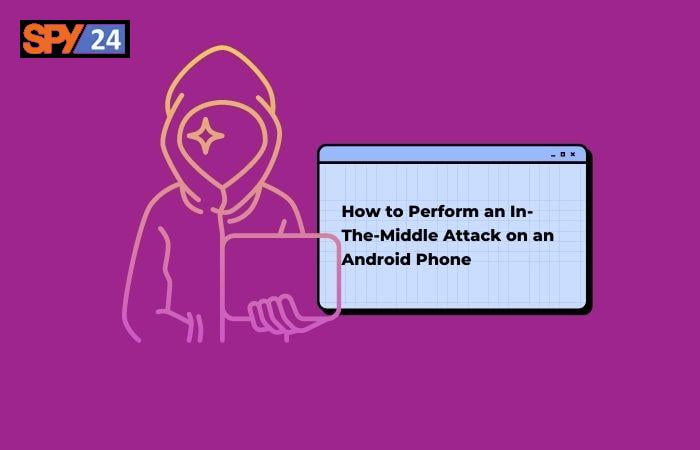
Attacks including a “man in the middle” scenario are very typical in the realm of cybersecurity threats. The Man in the Middle attack gives attackers the ability to listen in on a conversation between two target devices.
Because the attack takes place between two hosts that are lawfully able to communicate with one another, it enables the attacker to eavesdrop on a discussion they are not authorized to listen to. This is where the term “man in the middle” gets its meaning.
Spy24 is also designed to remotely monitor any Android or iOS device. It offers all of the fundamental as well as sophisticated tracking functions for devices, and it does so for both the normal and rooted/jailbroken versions. You can keep an eye on your target devices from a faraway location by using the Spy24 app.
MITM Attacks Can Take Many Forms
Attacking a target using the man-in-the-middle system may be done in a number of different ways, depending on the hacker. The following is a list of the several kinds of MITM attacks that are often used:
- APR Spoofing
- MDNS Spoofing
- DNS Spoofing
In addition, the following is a list of MITM attack techniques:
- Sniffing
- Injection in a Packet
- Session Hijacking
- SSL Stripping
How to Perform an In-The-Middle Attack on an Android Phone
Spying on Android phones with MITM attacks has become a reasonably straightforward process in recent years. The following are the steps that need to be taken:
- Create an account as the first step.
- Install the program on the two hosts’ Android smartphones as the second step.
- In the third step, you will start monitoring the activity of the two hosts, which means that you will be able to read their discussion.
The Man in the Middle (MITM) attack gives you the ability to pretend to be the other person in a discussion. You may act as a go-between while A and B are having a discussion by talking to both of them at the same time.
This implies that person A will believe you are person B, and person B will think you are person A. You will be able to get information from both sides at the same time if you use this method.
Hack an Android phone through WiFi using FoneWatcher
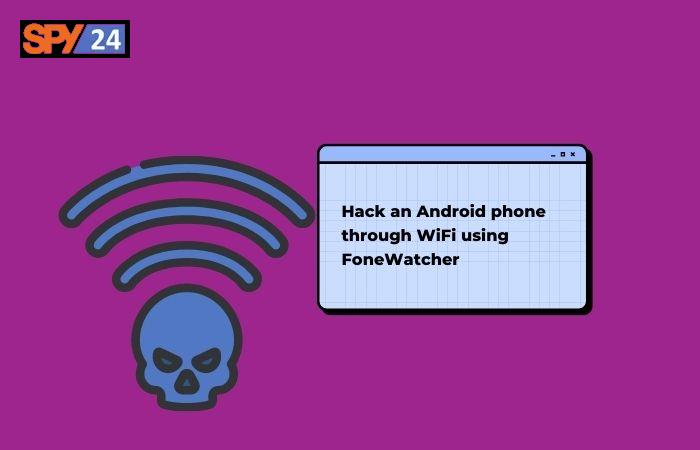
If you intend to hack an Android phone through WiFi and keep an eye on the actions of another person, you should use FoneWatcher since it is the most effective tool available.
You will likely come to the conclusion that FoneWatcher Android Monitoring is the superior monitoring program available given all of the wonderful advantages and characteristics that are embedded in it. The following is a list of the reasons why so many people choose FoneWatcher for Android:
Monitor and synchronize real-time location in addition to providing historical location information
Not only will FoneWatcher reveal the current position of your target, but it will also provide the locations of all the places that your target has been in the past. The target won’t even be aware that any of this is going on while it’s being carried out.
Check out the messages that have been sent, received, and deleted
Another fantastic advantage of using FoneWatcher is that you will have access to all of the text messages that your target has received, as well as the ones that they have sent; in fact, you will even be able to see the messages that they have deleted. This ensures that the person you’re aiming for won’t be able to hide anything from you.
100% concealed using the stealth mode
The FoneWatcher app is completely undetectable. Your target won’t have any idea what’s going on unless you chose to inform them yourself, of course. Other than that, they won’t have a clue. Aside from that, though, the target won’t be able to tell what you are doing or what you are watching while you are doing it remotely.
Maintain vigilance over social media applications including Instagram, Facebook, Snapchat, and WhatsApp
You are also able to watch your target’s social media profiles when you use FoneWatcher. You will have access to any messages, photographs, or videos that the other person has sent or received, regardless of the format. You will still have access to the information even if the target removes the files from their computer.
Screenshots can be taken and the camera can be hacked remotely
Only a few of the monitoring tools provide access to this capability. You are able to take screenshots of what is happening on the device of the person you are monitoring by using FoneWatcher. In addition, you have the ability to snap images of your target by activating the camera on their phone using a remote control.
How to hack an Android phone through WiFi using FoneWatcher

In this section, you will get a detailed walkthrough of the process that may be used to monitor a device via WiFi. Let’s get down to the nitty-gritty of it all.
Create a FoneWatcher account
When you join up for a FoneWatcher account, you will need to utilize an actual email address. After that, you will need to choose a license and then make a payment for it in order to unlock all of this Android tracker app’s capabilities.
Adhere to the instructions provided in the setup guide and make any necessary adjustments
After you have successfully completed the purchase procedure, you will be sent to the page, where all of your purchased items are stored. On this page, you will discover the order that corresponds to the one you set earlier in the process.
To understand how to begin using the program, all you have to do is to choose the Setup Guide option from the correct order and carefully go through each of the steps in the setup process.
The following is an outline of the primary actions that need to be taken:
1. Obtain the app from Google Play and install it on the Android smartphone being targeted.
2. Ensure that all of the setup processes are followed, and make any required adjustments.
3. Using the online management panel, validate the configuration, and begin monitoring the system.
Confirm That Your Setup Is Correct, Then Begin Monitoring
Next, you will need to ensure that everything is properly configured by clicking the “Verify Setup” option. If you answered yes, you will be sent to the online dashboard page of the application, where you will be able to see the information that was monitored from the Android device that was being targeted.
You may examine the data in accordance with each supported feature by clicking on it on the left side of the control panel, where it lists all the features that are supported. If this is your first time logging in to the control panel, it is possible that it may take some time to sync all of the data acquired from the Android devices that are being watched.
What makes a Wi‑Fi router secure?
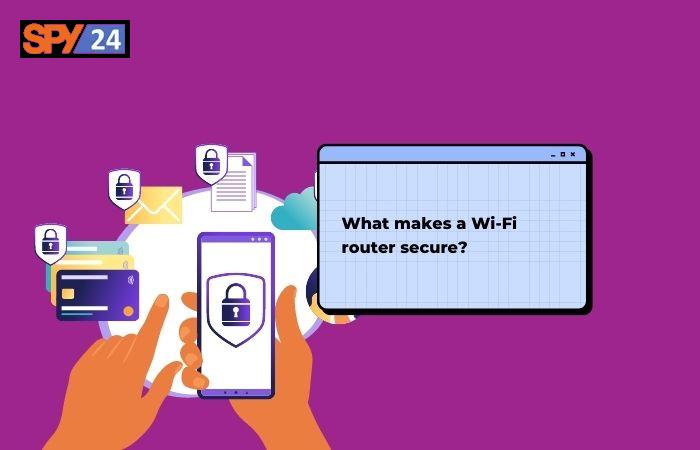
The wireless Internet connection in your house is made up of your Wi-Fi network. In most cases, a wireless router is used, which is a device that transmits a signal across the air. You are able to connect to the Internet by using that signal. But unless your network is secured by a password, any device within range may get the signal from the air and utilize your Internet connection if it isn’t password protected.
The benefit of using Wi-Fi is that you are able to connect to the Internet through a wireless connection. What’s the catch? Others in the neighborhood who connect to your unsecured network may be able to view what you do online, including information that is personally identifiable to you.
Furthermore, if someone were to use your network to conduct a crime or transmit spam that violates the law, the behavior may be linked back to you. You can prevent this by taking some steps.
Alter your home network’s default username and password to something more secure
Changing the default name of your home Internet connection is the simplest step you can take to increase the level of protection it provides. You are able to change this name, which is also referred to as the SSID (Service Set Identifier), by following the procedures that are listed here:
- Launch the Command Prompt on Windows,
- When prompted, type “ipconfig,”
- Find out what your IP address is,
- Simply enter your IP address into the address bar of your browser,
- Put in the login information for your router here,
- Open WiFi settings,
- Modify both the SSID and the password.
When updating your WiFi password and SSID, pick a phrase that is longer and more specific to the device you are using. During this procedure, you should avoid using any information that may be considered apparent or personal, such as your name or birthdate.
Strictly control who can access your wireless network
It may seem like common sense, but you shouldn’t provide access to your home network to someone you aren’t familiar with. If more individuals have access to your wireless network credentials, there is a greater possibility that your data may be compromised and used inappropriately.
For instance, if you have a repairman come to your house, they do not require access to the WiFi network in your home in order to do their task. Therefore, avoid permitting unfamiliar devices to connect to your home network unless there is an essential reason to do so.
One exception to this rule is a person working for the business that provides your Internet service; nevertheless, in general, you should not make exceptions to this rule.
Establish connectivity based on your home guests
If someone wants access to your wireless network, rather than handing out your credentials, let them join to a network that is designated for guests.
You are able to conceal any shared files, printers, storage devices, and network devices that are linked to your principal wireless network by using the guest networking option, which enables you to set up a secondary WiFi network for your guests that gives them access to the Internet.
The vast majority of wireless routers are equipped with this capability, which can be accessed via the configuration settings of the device. Create a unique SSID and password for the guest network when you set it up, and be sure to keep them distinct.
Turn on the encryption for the WiFi network
The majority of WPA2 and WPA3 routers have an encryption option in their feature set. This functionality may be activated in the Wi-Fi settings of your router, which can be accessed by entering your IP address and the login credentials to your router. Any data that is sent between your wireless channel and your device is encrypted when encryption is enabled for your WiFi network.
Because of this, it will be impossible for anybody to eavesdrop on your WiFi network unless they have first logged into your WiFi network. Just keep in mind that when you activate this feature, each of your devices will need to be manually reconnected to the wireless network it is connected to.
Activate the firewall on your router
The vast majority of wireless routers come preconfigured with dependable hardware-based firewall protection features. It is possible for undesirable traffic to access or exit your wireless network without your awareness if you do not have a solid firewall in place.
Since router firewalls are often not activated by default, it is necessary for you to set yours on in order to protect your network. In order to accomplish this, go to the settings of your router using your IP address, and then activate the option. To locate the toggle for the firewall, you may have to check in the “advanced options” section of your router.
It’s possible that using the firewall on your network can slow down your Internet connections. You may get around this problem by disabling the firewall whenever you play online games or carry out any other activities that call for a more rapid Internet connection. Once you’re done, simply switch it back on.
Before you leave the house, make sure that your WiFi network is turned off
It’s possible that turning off your WiFi network every time you leave the house might be too much of a problem for you, but if you’re going to be gone for a significant amount of time, you should definitely disconnect the wireless network in your home. This will ensure that your network is protected from any and all threats.
Update your router’s firmware
The firmware installed on your router is an extremely significant component of the jigsaw that is a secure network connection. The software on the vast majority of wireless routers does not automatically get updated, therefore you will need to do it yourself.
You may upgrade the firmware on your router by going to the website of the manufacturer and downloading the file that contains the update. Install it thereafter by connecting it straight to your wireless router. Surf the manufacturer’s website for step-by-step directions on how to complete the procedure, since each router brand has a slightly different method.
Transform your router into a WPA3 one
WPA3 routers were introduced for the first time in 2018, and they have stronger security methods to solve a significant number of the flaws that were discovered in WPA2 routers. If you rent your router from your Internet service provider (ISP), there is a good probability that it is a WPA2 device. In such a situation, you will be required to get a WPA3 router that is sold separately.
A WPA3 router will improve the safety of your home wireless network, but purchasing one can be an unexpected investment for you. It is also likely to improve the strength of the WiFi signal that you get.
Turn off the remote access system
The majority of routers have a remote access capability that enables you to connect to your WiFi network from any location in the world, where you have access to the Internet.
Although this may be an easy method to administer your wireless network from another place, there is a possibility that it might also lead to security problems on the network.
If you haven’t changed the default router credentials, then anybody might access your wireless password and, as a consequence, your network. This raises the risk of being hacked, which means you should change them as soon as possible.
It is recommended that you deactivate the remote capability unless using it is an essential need. Hackers have a much easier time gaining access to your wireless network if it is too simple for them to possibly get your valid credentials. Locate the settings for remote access in the user interface of your router if you want to deactivate this option.
Position your router in the middle of your house
The signals broadcast by the vast majority of WiFi networks are powerful enough to allow third parties located outside of your house to “see” the connection on their own device. You may easily avoid this from occurring by moving your router to a spot in your house that is closer to the center of the building.
This is a simple and non-technical action that may be taken to prevent unauthorized entrance to your property from someone who is parked just across the street from it. In addition to this, it will improve the quality of Internet connectivity across the whole house.
If the architecture of your house makes it impossible for you to relocate your router to a central location, you should at the very least relocate your wireless router away from windows.
Windows doesn’t interfere with the WiFi connection in any way. It is feasible for an unauthorized user to access your network from outside your premises; however, this will depend on how strong the signal is.
Can a Wi‑Fi router be hacked?
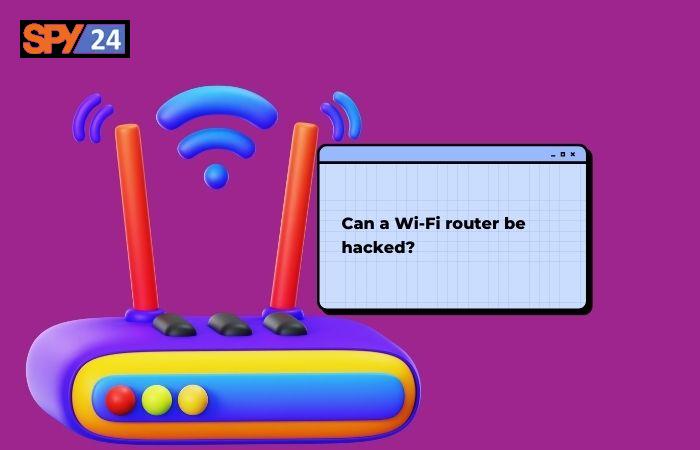
Whether you are working online from a coffee shop, reading emails from an airport lounge, or watching Netflix from the comfort of your own home, the security of your Wi-Fi connection might be compromised by hackers.
Hackers may acquire personal information such as credit card numbers, passwords to social media accounts, and even compromise online banking applications by hacking your router, spying on your WiFi connection, and even hack phones through WiFi. They can do this by hacking your router, spying on your Wi-Fi connection, and even eavesdropping on your conversations.
Even while hacking into Wi-Fi networks isn’t nearly as widespread as other sorts of social engineering assaults like ransomware, it’s still a serious risk.
For instance, a hacker stole the personal information of 50 million T-Mobile users by taking advantage of an unencrypted router. Consumers are also in danger of having their routers hacked in addition to large multinational organizations, which are also at risk.
During the coronavirus pandemic, there was an increase in the number of people working from home, which led hackers to target residential Wi-Fi networks more often. There are still millions of homes that are using obsolete routers that have not been fixed.
Regrettably, the ordinary individual does not have a sufficient level of familiarity with this issue, nor are they aware of the numerous solutions that may secure their home Wi-Fi network from being hacked.
Should I change my Wi‑Fi router password?
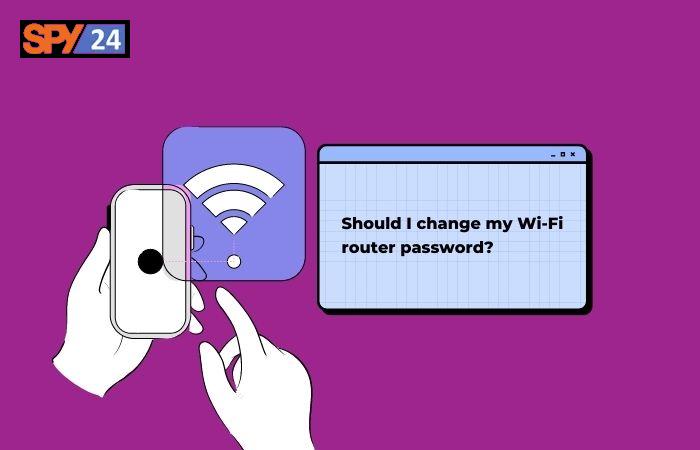
You might be taken aback by how simple it is to penetrate the security of your home Wi-Fi network these days and to hack phones through WiFi.
A hacker may hire a powerful cloud computer for a relatively little amount of money and usually figure out your network’s password in a matter of minutes using brute force or by employing the powerful computer to test a large number of possible combinations of your password.
If the password you use to access your home Wi-Fi network isn’t very secure, your network might be easily compromised and hackers can hack your phone through WiFi.
Do I need Internet security with a password-protected router?
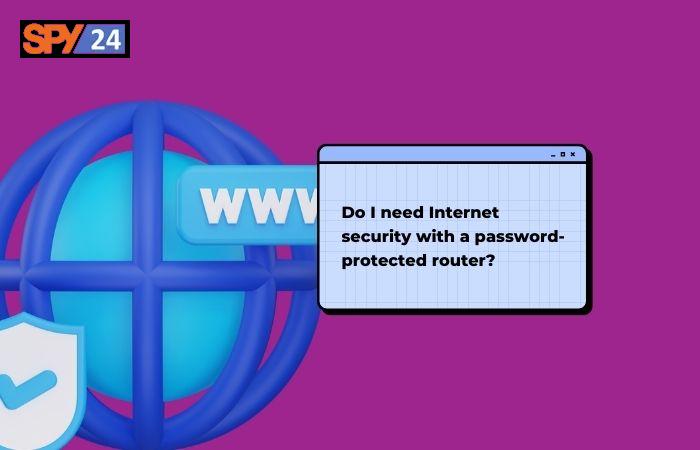
Our laptops and mobile phones will always be the most crucially linked devices in our homes, and a vulnerable router may make it easier for hackers to compromise these devices and infect them with malware. You may shield your PCs and mobile devices from viruses and other dangers by securing your Internet connection using software that offers protection on a global scale.
Conclusion
Your personal data is comparable to cash in the eyes of cybercriminals. Do not fall into the trap of believing that a knowledgeable hacker cannot access your network and hack your phone through WiFi just because it is located in your living room.
If you monitor the activity on your network and take the time to correctly setup your router and Wi-Fi security with the most stringent security settings, you will lessen the likelihood that a cybercriminal will be able to get past your defenses, steal your personal information, and hack your phone through WiFi.
FAQ
Here are some of the Frequently Asked Questions about hacking your phone through WiFi:
Is it possible for someone to hack your phone through WiFi?
Your phone may, unfortunately, be hacked over its Wi-Fi connection. No matter if you have an iPhone or an Android phone, hackers are able to get into your phone in the same way they would take control of any other physical equipment. This is particularly true while utilizing public Wi-Fi networks.
In the course of a man-in-the-middle attack, a hacker is able to listen in on conversations that take place between a phone and a Wi-Fi network in order to get private information that is sent from the phone.
How to determine if your account has been hacked?
There are a few telltale signals that indicate that someone has hacked into your account. Because you are logged in as an administrator on your own network, determining this information is much simpler there.
If this is the case, you can check the Wi-Fi status in the control panel of the router to determine whether or not there is an unknown device connected, and if there is, you can remove the unknown device from the network, disconnect the router, and change the passwords for both the administrator and the SSID.
Aside from that, symptoms might be the same as or comparable to those of computer malware infections, including the following:
- The device starts to perform more slowly.
- Your web browser suddenly sends you to a website you are not acquainted with for no apparent reason.
- On websites that were once protected, the lock to the left of the address bar is now unlocked.
- Your passwords cease functioning.
- You have received a message from the ransomware.
How to decrease the possibility of being hacked?
If you do not feel comfortable with large corporations and governments spying on you for “your own benefit,” then you should exercise extreme caution while selecting your next mobile device.
Before you download and install anything that you will quickly come to regret, be sure that the source of the software you are putting on your device is reliable and that you have read reviews written by other users.
When you are utilizing the Internet outside of your home network, you should use virtual private network (VPN) software or a web browser that comes equipped with built-in VPN functionality.
If you want to make it more difficult for hackers to get into your home network and hack your phone through WiFi, you should be sure to alter the username and password that the router uses by default.




